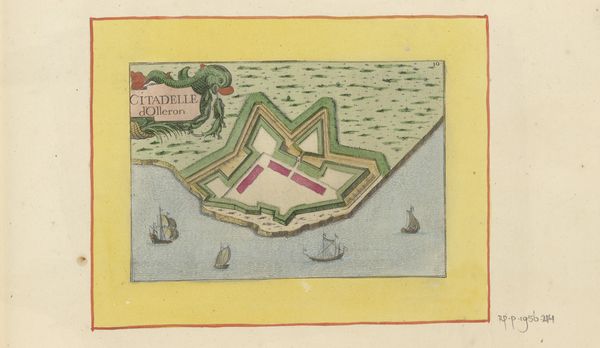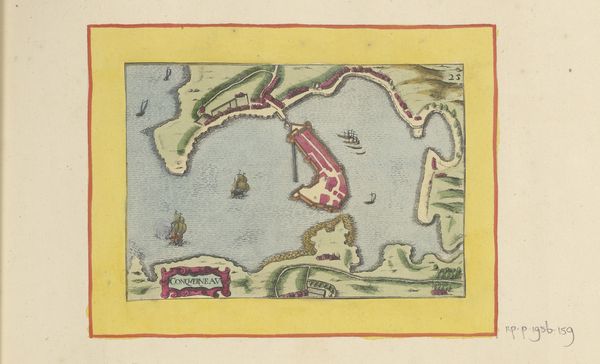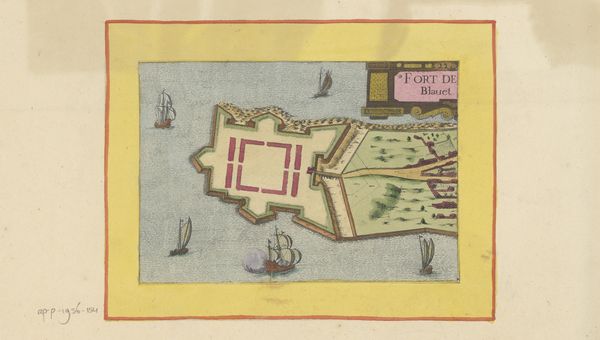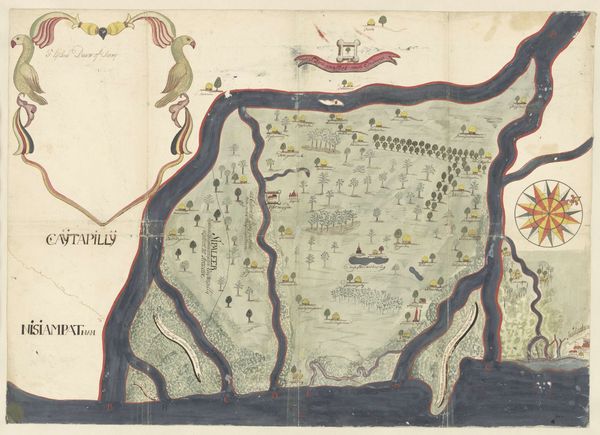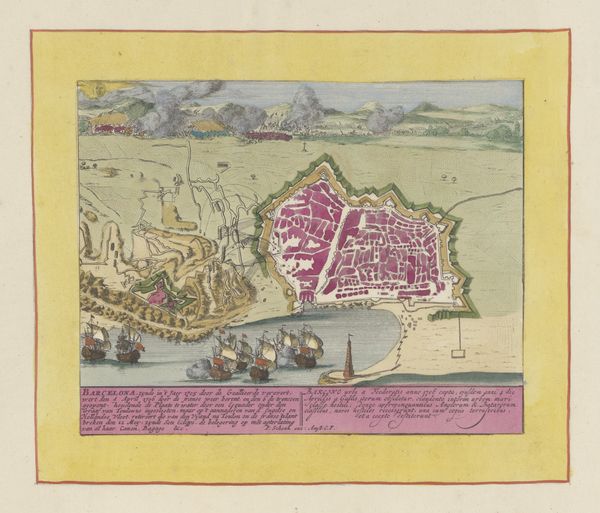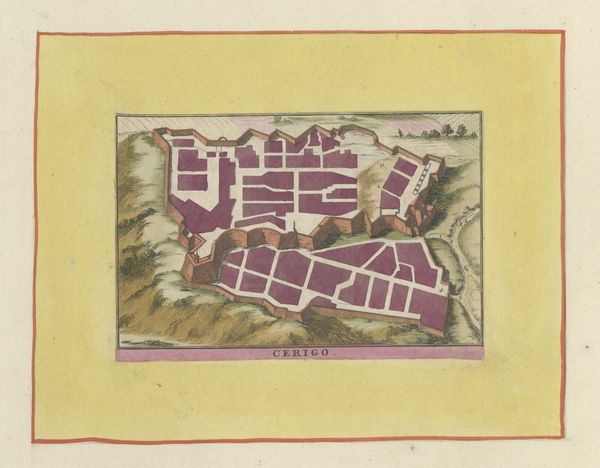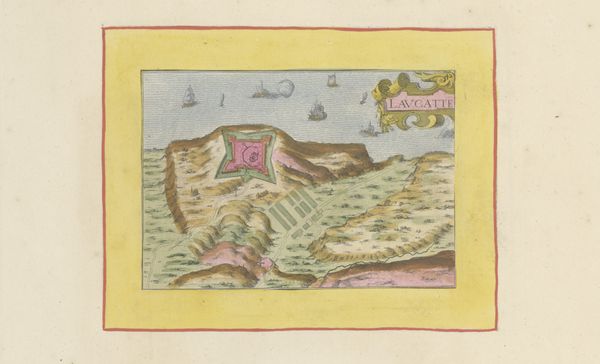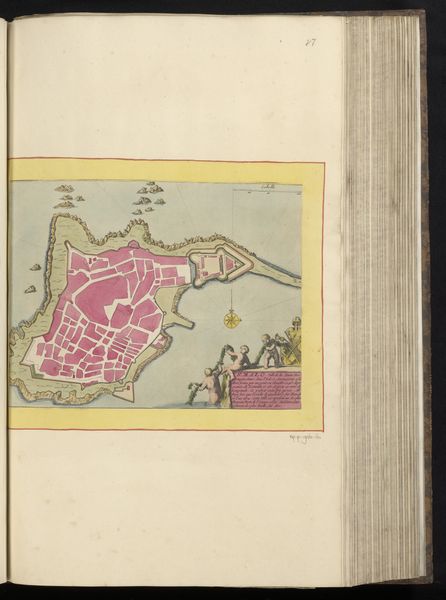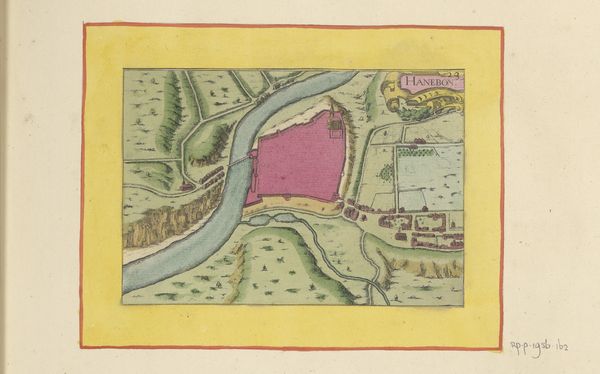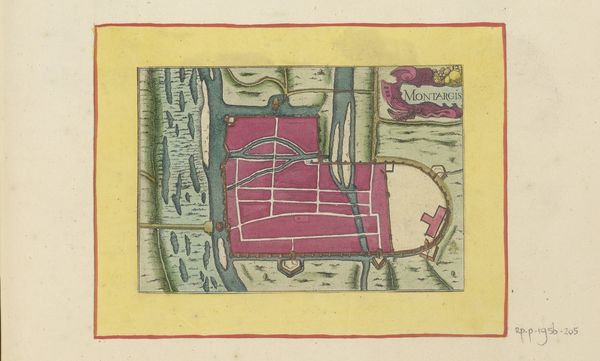
print, paper, engraving
#
baroque
# print
#
landscape
#
paper
#
cityscape
#
engraving
Dimensions: height 103 mm, width 149 mm, height 532 mm, width 319 mm
Copyright: Rijks Museum: Open Domain
Editor: So, here we have a 1638 print called "Plattegrond van een niet langer bestaand eiland bij Bouin," or "Map of a no longer existing island near Bouin." It's an engraving on paper by an anonymous artist. The detail is incredible. The island itself is densely packed with structures, a striking contrast to the empty sea around it. How would you interpret the piece, focusing on the elements within the frame? Curator: Indeed. Focusing on formal elements, the composition hinges on a tension between meticulous detail and suggestive abstraction. The buildings, rendered in a repetitive, block-like fashion, create a powerful sense of visual rhythm. Notice how the engraver uses the sharp contrast of line and void to define form; the lines are crisp, delineating the buildings. But then the textures become muted in areas like the ocean and foliage, suggesting the limitations of a two-dimensional representation to depict the organic forms of nature. Editor: I see that! The colour blocking is pretty striking. Red dominates the island versus the neutral greys around. What would be the relevance of colour use? Curator: Consider how the application of colour flattens the pictorial space. The primary reds serve a key structuring function; it highlights certain areas on the page which draw the eye, defining this man-made space from a wider environment, even though a consistent spatial logic might be disrupted by these choices. Are we looking at spatial form, or something different? Editor: So it’s not about the geography, as much as the method and how it plays on our understanding. That's so interesting. Curator: Precisely. In engaging with "Plattegrond van een niet langer bestaand eiland bij Bouin" through form, we perceive its intricate game between the representative and the purely compositional. It prompts us to look critically at the means of making images, and our interpretation of such forms. Editor: I appreciate that perspective, looking beyond the surface details and seeing how the form informs our understanding of place and representation.
Comments
No comments
Be the first to comment and join the conversation on the ultimate creative platform.
